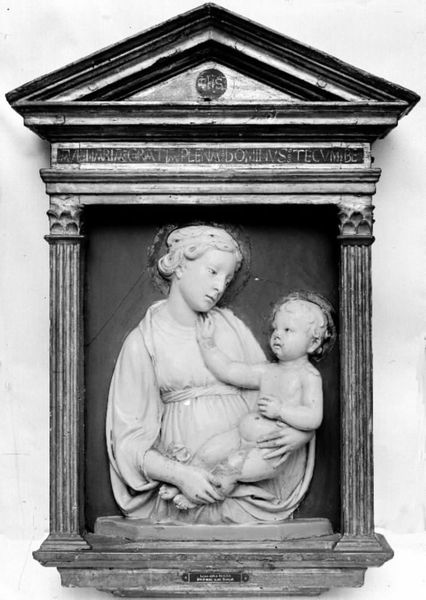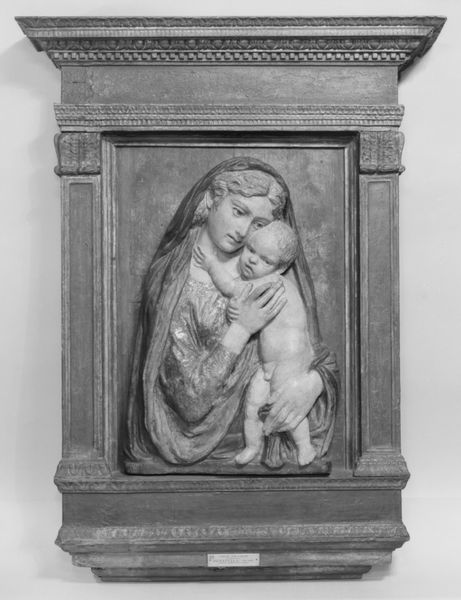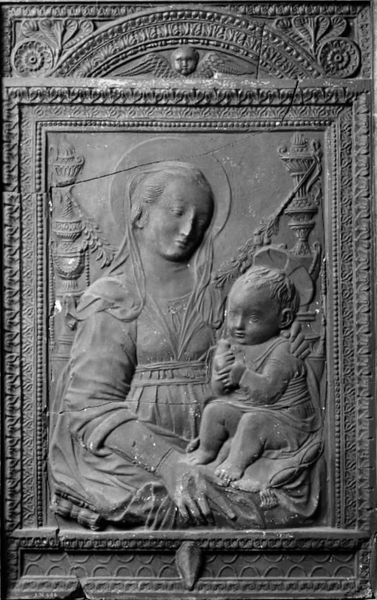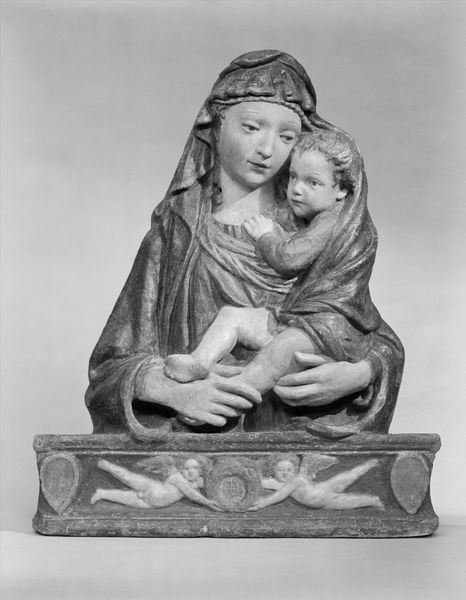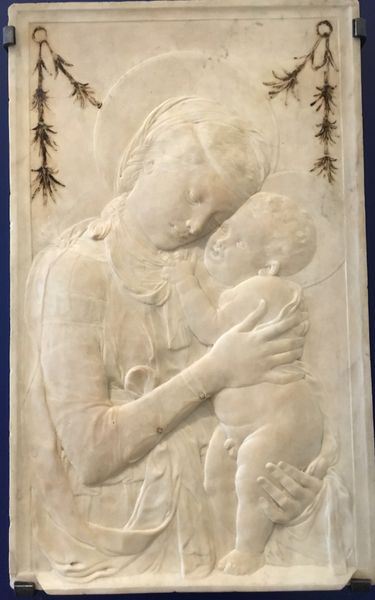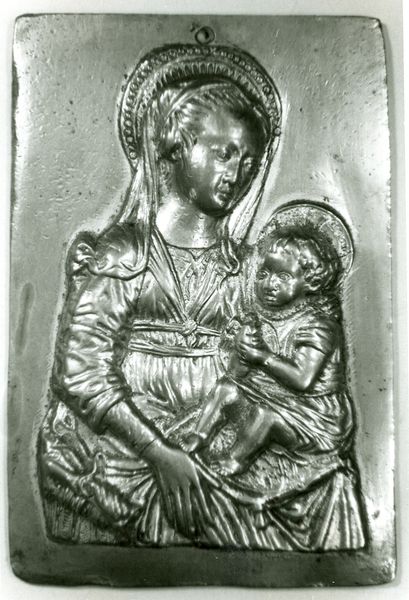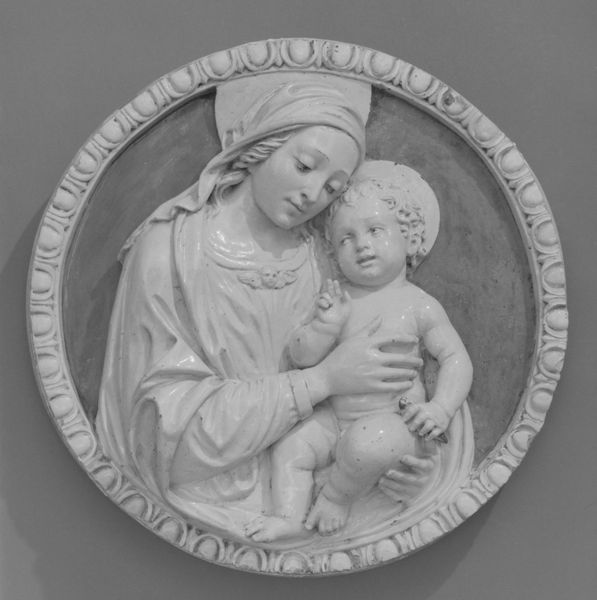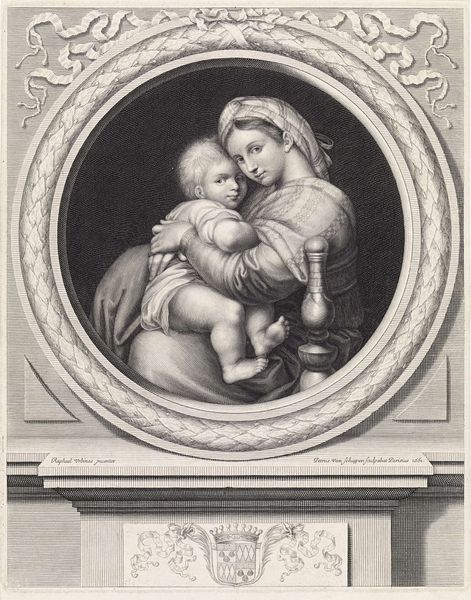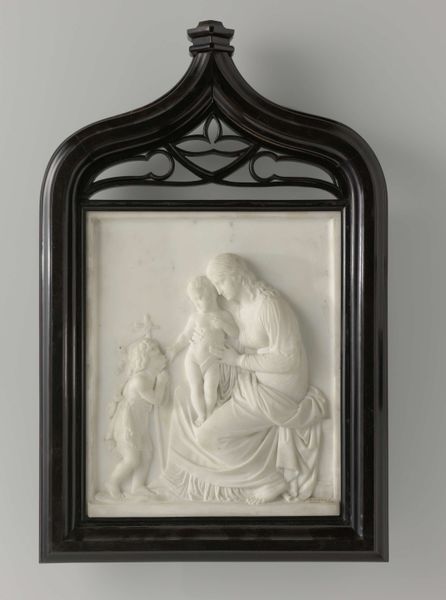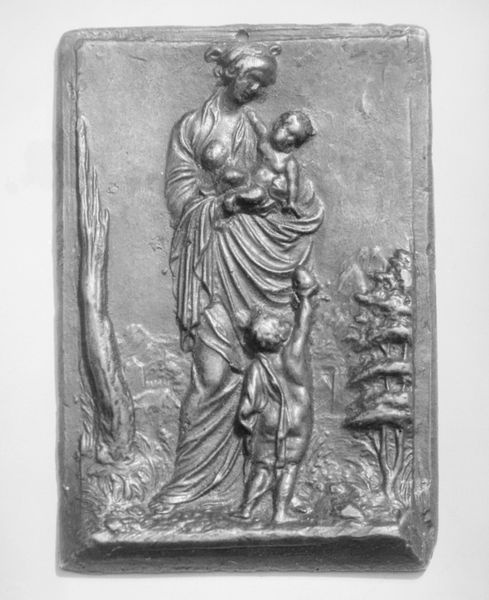
alabaster, relief, sculpture, marble
#
portrait
#
stone
#
sculpture
#
alabaster
#
relief
#
figuration
#
child
#
sculpture
#
decorative-art
#
marble
#
italian-renaissance
#
early-renaissance
Dimensions: Overall (wt confirmed): H. 37 1/4 x W. 23 in., 178lb. (94.6 x 58.4 cm, 80.7403kg)
Copyright: Public Domain
Curator: Looking at this sculpture of the Virgin and Child, crafted between 1459 and 1474 by Mino da Fiesole, the softness of the stone immediately strikes me. It's currently housed in the Metropolitan Museum of Art. Editor: Soft is the word! It’s remarkable how tactile it appears, even through glass. There's a profound sense of tenderness, almost melancholic, emanating from the Virgin’s downward gaze. Curator: Indeed. The use of alabaster and perhaps marble adds to this delicate quality. Consider the societal demand for such devotional images during the Early Renaissance; works like this offered a tangible connection to religious figures. This piece certainly highlights the skill required to transform raw materials into objects that reinforced social structures and religious belief. Editor: Exactly. And how these pieces functioned within the domestic sphere or smaller chapels greatly informed their scale and intimacy. What role do you think patronage played in Fiesole’s artistic decisions here? Curator: Patronage, absolutely central. Patrons dictated not just subject matter, but often materials. Access to alabaster of this quality signified a commission of significant expense. Mino’s workshop would have employed artisans each with a dedicated role in the process, dividing labor, raising questions around artistry, and commodity. The art market dynamics significantly affected artistic production and shaped religious ideologies. Editor: Thinking about how the Church utilized art to solidify its position of power reminds me to observe how Virgin's role has changed. What stories are images like these telling? Are they reinforcing conventional portrayals of motherhood, even the status of women, in their society? Curator: That’s insightful, and I’d argue that Mino skillfully blends the expected iconography of the Virgin with humanistic sentiment which, naturally, the patronage supported as long as conventional gender dynamics weren't challenged. Editor: That makes sense. Fiesole navigated the societal demands of his time masterfully, leaving behind a compelling work of art with a lot for us to examine in our own era. Curator: Well, thinking about the materials and the conditions around production definitely deepens our engagement with "Virgin and Child." We can see just how materially significant religious sculpture of the era truly was.
Comments
No comments
Be the first to comment and join the conversation on the ultimate creative platform.
